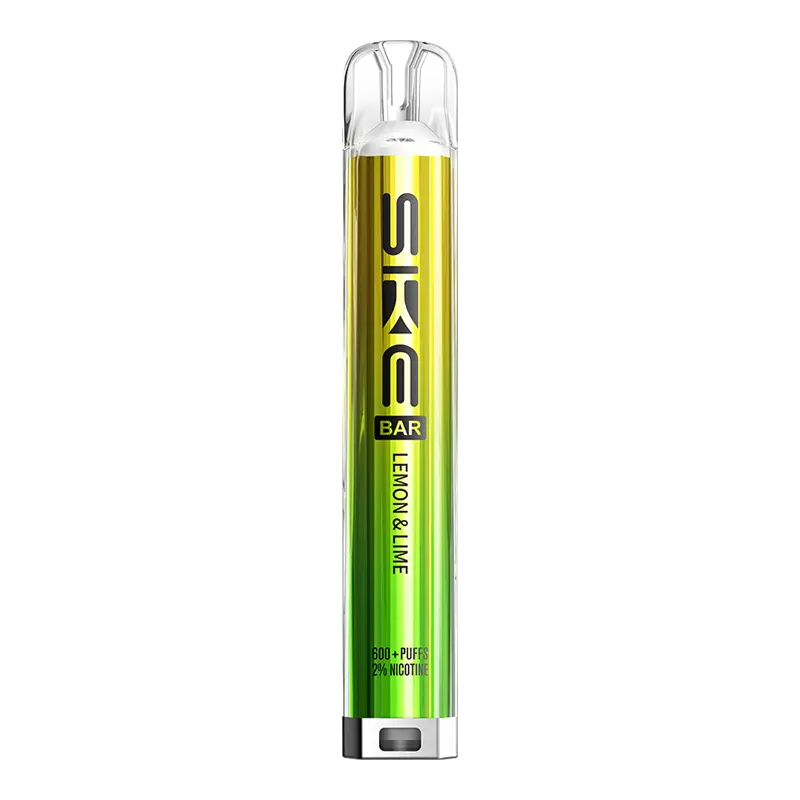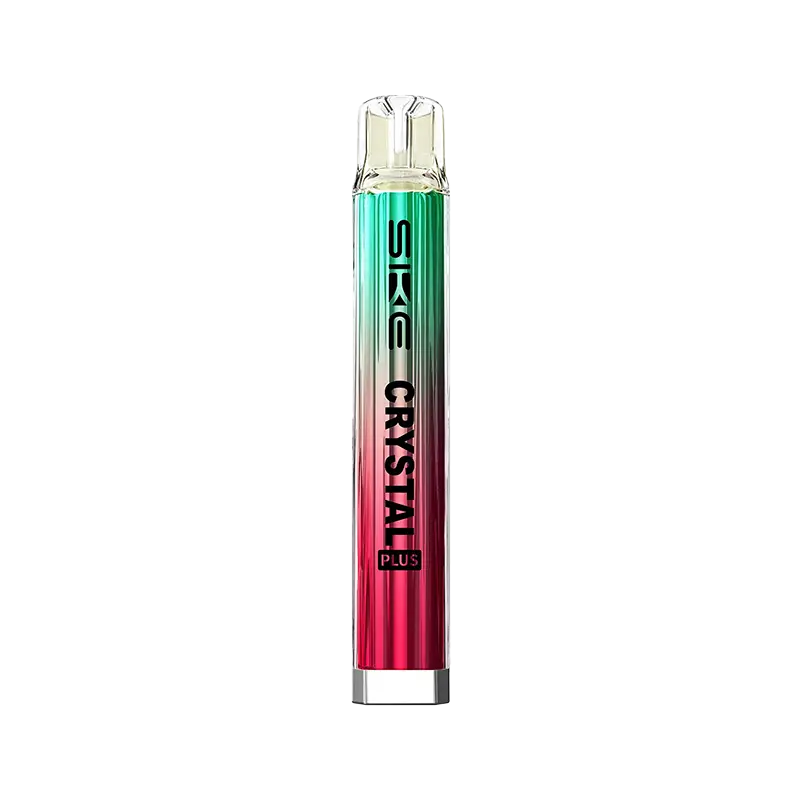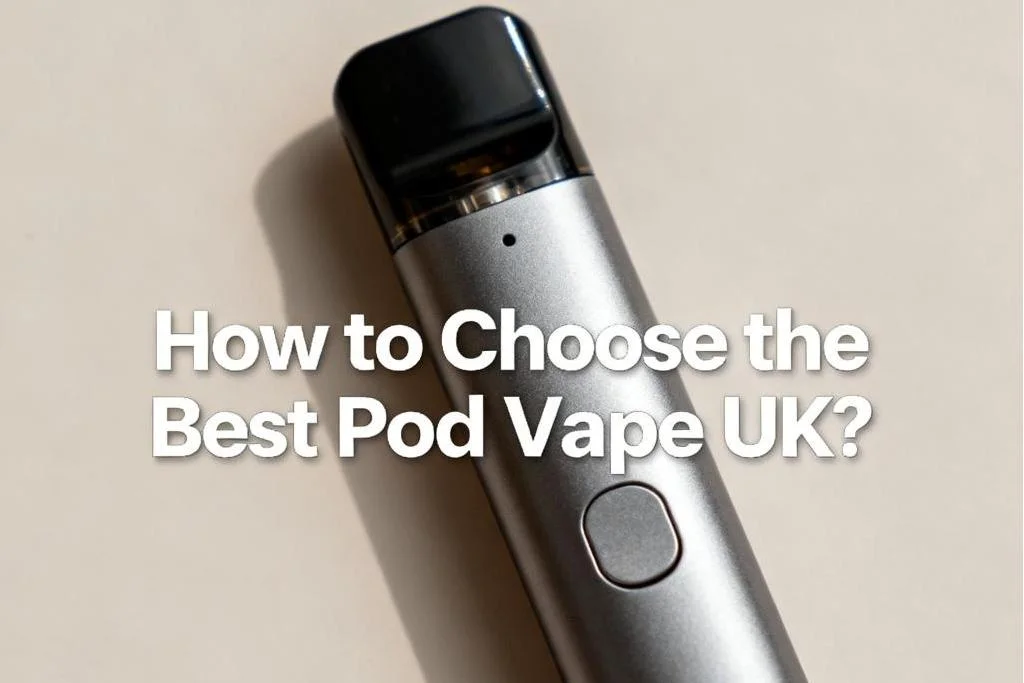What is a Sub Ohm Vape? A Deep Dive
Ever wondered what is a sub ohm vape? This term has become a buzzword in the vaping community, yet not everyone is clear on what it truly entails. By diving into the mechanics of ohm tanks and exploring the dynamic interaction between power output and resistance coils, this blog post aims to unfold the complexities of sub ohm vaping, catering to both novices and seasoned enthusiasts looking to enhance their vaping experience.

What Is a Sub Ohm Vape?
A sub ohm vape is an advanced segment of vaping device engineered to use coils with less than one ohm resistance, significantly enhancing the performance of the e-cigarette and the overall vaping experience it offers. The term "sub ohm" is derived from the measurement unit for electrical resistance, the ohm, named after the renowned physicist Georg Simon Ohm. These devices enable higher power output due to their lower resistance, which requires more power to generate heat, causing the coil to heat faster and reach higher temperatures, significantly boosting vapor production.
The mechanics of sub ohm vaping extend beyond simple heat generation. They drastically alter vapor production dynamics, creating denser and richer clouds, which is especially beneficial with high vegetable glycerine (VG) e-liquids known for producing voluminous vapor. Typically, these e-liquids have a higher VG ratio to propylene glycol PG balance, contributing to smoother and thicker vapor, which is less harsh on the throat — hence affecting the throat hit, a key aspect of the vaping experience that describes the sensation felt in the back of the throat during inhalation.
Additionally, sub ohm devices are often set up for a "direct lung" (DL) inhalation style, distinct from the "mouth to lung (MTL)" style typical of higher-resistance setups. In DL vaping, vapor is inhaled directly into the lungs, much like taking a deep breath. This method facilitates the immediate delivery of a large volume of vapor, maximizing both flavor and vapor cloud in each puff, which can be a more satisfying style of vaping for those who enjoy an intense sensory experience.
From a technical standpoint, the design of sub ohm vaping devices often includes adjustable airflow controls, which help manage the cooling of the coil and the mix of air and vapor, allowing for a customizable vaping experience. They also tend to have more robust batteries or require more powerful external batteries to accommodate the increased power output.
Essentially, a sub ohm vape caters to those who prioritize dense vapor clouds and robust, vibrant flavors, particularly appealing to "cloud chasers" and flavor enthusiasts in the vaping community.

What Are the Pros and Cons of a Sub Ohm Vape?
Sub ohm vaping, while immensely popular among certain circles within the vaping community, carries its own set of advantages and challenges. Understanding these can help vapers determine whether a sub ohm device aligns with their personal preferences and vaping experience goals.
Pros of Sub Ohm Vapes
1. Enhanced Flavor Delivery: The higher heat generated by the low-resistance coils volatilizes more flavor compounds, providing a richer and more complex taste.
2. Increased Vapor Production: It's particularly appealing for cloud chasers, as the large, dense clouds are visually impressive and enhance the physical sensation of vaping.
3. Warmer Vapor: The heat creates a warmer vapor, enhancing the overall vaping experience by producing a comforting warmth often appreciated in cooler conditions.
4. Direct Lung Inhalation: It can be more satisfying for those who prefer a hearty, deep inhaling style, akin to traditional smoking experiences but without combustion.
5. Customization Options: Sub ohm vapes frequently offer extensive customization settings, such as adjustable airflow, power output, and sometimes even temperature control, allowing users to tailor their vaping experience to their exact liking, adjusting for preferred resistance, vapor volume, and throat hit.
Cons of Sub Ohm Vapes
1. Higher E-Liquid Consumption: It consumes e-liquid much more quickly than standard setups, potentially increasing the overall vaping cost, especially for frequent users.
2. Battery Drain: The increased power output required to operate sub ohm coils demands more from the battery, leading to faster battery drains and more frequent charging or carrying of spare batteries, which can be inconvenient.
3. Potential for Nicotine Overload: While many sub ohm vapers use e-liquids with lower nicotine strengths, the sheer volume of vapor produced can still deliver a considerable amount of nicotine, especially if not carefully monitored.
4. Learning Curve and Safety Concerns: Sub ohm vaping involves more complex devices that can require a steeper learning curve. Additionally, the high-power requirements can raise safety concerns, such as risks of battery failures or improper handling, which necessitates a good understanding of battery safety principles.
5. Not Suitable for Everyone: The intense throat hit and large vapor clouds produced by sub ohm devices may not be comfortable or enjoyable for everyone, particularly those new to vaping or those with sensitive throats.

How Do I Know if My Vape Is Sub Ohm?
Determining whether your vaping device is a sub ohm vape is crucial for optimizing your vaping experience.
1. Check the Resistance Level of Your Coil
Most modern vaping devices come with replaceable coils, and the resistance is usually clearly marked on the coil itself or its packaging. A coil with a resistance below one ohm, such as 0.5, 0.3, or 0.15 ohms, is considered a sub ohm coil.
2. Device Specifications and User Manual
Another reliable source of information is the user manual or the specifications listed on the manufacturer's website or product packaging. Manufacturers typically specify whether the vape device is capable of sub ohm vaping. Look for terms like "sub ohm capable," "supports sub ohm coils," or specific mentions of the resistance levels the device can handle.
3. Type of Device
Sub ohm vaping is usually associated with more advanced vaping devices like box mods and vape pens that offer adjustable power output settings, designed to handle the demands of lower resistance coils and higher power needs. If your device includes variable wattage or temperature control features, it might be a sub ohm vape.
4. Airflow and Power Requirements
If your device has large, adjustable airflow slots, it might be designed for sub ohm vaping, which requires greater airflow to manage the higher power output and heat. Similarly, if the device supports high wattage levels — often anywhere from 40 watts to over 200 watts—this is a strong indicator that it can handle sub ohm coils.
5. Vapor Production and E-Liquid Consumption
If you notice your vape produces a considerably larger volume of vapor than typical entry-level models and consumes e-liquid more rapidly, it might be a sub ohm setup.

What Is the Difference Between Ohm and Sub Ohm Vaping?
The distinction between ohm and sub ohm vaping is pivotal in determining the kind of vaping experience you can expect. Each type offers distinct benefits and serves different needs, from casual, discreet usage to performance-oriented, flavor-rich sessions.
1. Resistance and Power
- Ohm Vaping: Uses coils with a resistance of 1 ohm or higher, requiring less power.
- Sub Ohm Vaping: Utilizes coils with a resistance below 1 ohm, demanding more power output and creating higher heat levels.
2. Vapor Production
- Ohm Vaping: Typically produces a moderate amount of vapor, suitable for discreet vaping sessions.
- Sub Ohm Vaping: Known for generating a substantial volume of vapor, appealing to those who enjoy visually impressive cloud production.
3. Flavor Intensity
- Ohm Vaping: Offers a milder flavor, preferable for vapers sensitive to intense tastes.
- Sub Ohm Vaping: Enhances flavor release due to higher temperatures, providing a richer and more robust taste experience.
4. Throat Hit
- Ohm Vaping: Generally provides a sharper and more pronounced throat hit, suitable for users seeking a sensation similar to traditional smoking.
- Sub Ohm Vaping: Delivers a smoother throat hit due to the increased vapor, often accompanied by lower nicotine e-liquids to balance nicotine intake.
5. E-Liquid and Nicotine Usage
- Ohm Vaping: Compatible with e-liquids that have higher propylene glycol PG content, enhancing flavor and throat hit with higher nicotine levels.
- Sub Ohm Vaping: Prefers e-liquids rich in vegetable glycerine VG, which supports thick cloud production and features lower nicotine levels due to efficient nicotine delivery.
6. Device Requirements
- Ohm Vaping: Achieved with simpler, more portable devices that don't require high wattage settings.
- Sub Ohm Vaping: Needs more advanced devices capable of handling higher wattages and equipped with features like adjustable wattage or temperature control.
7. User Experience
- Ohm Vaping: Ideal for those who prefer a straightforward, low-profile vaping experience, closely resembling cigarette smoking.
- Sub Ohm Vaping: Favored by vaping enthusiasts and social vapers who prioritize large clouds and intense flavors.

What Is the Difference Between MTL and Sub Ohm Vaping?
Understanding the distinction between MTL and sub ohm vaping is essential for vapers to choose a vaping style that best suits their preferences and habits.
1. Inhalation Technique
- MTL Vaping: Mimics the traditional cigarette smoking technique. The vapor is first drawn into the mouth and then inhaled into the lungs, which is favored for its control over vapor intake and ease of use, especially for beginners.
- Sub Ohm Vaping: Involves inhaling vapor directly into the lungs, similar to taking a deep breath, preferred by those seeking intense vapor and flavor production.
2. Device and Coil Resistance
- MTL Vaping: Typically using higher resistance coils (above 1 ohm), these coils need less power, making them ideal for smaller, less powerful devices.
- Sub Ohm Vaping: Using lower resistance coils (below 1 ohm), which require higher power for effective operation, this setup is common in more robust and advanced vaping devices.
3. Vapor Production
- MTL Vaping: Produces a smaller amount of vapor, which is ideal for vapers who prefer a vaping experience similar to smoking.
- Sub Ohm Vaping: Known for producing large clouds of vapor, which enhances the visual and sensory experience, appealing to cloud chasers and those who enjoy an intensive vaping session.
4. E-Liquid Composition
- MTL Vaping: Often uses e-liquids with a higher propylene glycol PG content, which provides a stronger throat hit and carries flavor more effectively.
- Sub Ohm Vaping: Generally prefers e-liquids with a higher vegetable glycerine VG content, which supports larger, denser vapor production and offers a smoother inhale.
5. Nicotine Strength
- MTL Vaping: Because the vapor production is less intense, higher nicotine strengths are typically used to satisfy nicotine cravings effectively.
- Sub Ohm Vaping: Usually employs lower nicotine strength e-liquids due to the large volume of vapor produced.

Why Do Some Vape Juices Say Not for Sub-Ohm Use?
The label "Not for Sub-Ohm Use" on some e-liquid bottles serves as a critical guideline for vapers, indicating that it may not perform optimally or safely with sub-ohm vaping setups. Here’s a deeper look into why some vape juices carry this warning:
1. High Nicotine Content
- Enhanced Nicotine Delivery: When using e-liquids with high nicotine levels in a sub-ohm setup, the large amount of vapor can lead to excessive nicotine intake per puff, resulting in symptoms of nicotine overdose such as nausea, headaches, and dizziness.
- Intense Throat Hit: Higher nicotine e-liquids are known for providing a pronounced throat hit, which can become overwhelming and uncomfortable when amplified by sub-ohm vaping's increased vapor production.
2. Propylene Glycol (PG) to Vegetable Glycerine (VG) Ratio
- Leakage and Performance Issues: E-liquids with a higher propylene glycol (PG) ratio are thinner and can leak in sub-ohm tanks designed for thicker, VG-dominant juices, potentially wasting e-juice and damaging the device if the e-liquid reaches electrical components.
- Harshness at High Temperatures: Since PG has a lower boiling point than VG, high-PG liquids can produce a harsh and unpleasant vapor at the high temperatures typical of sub-ohm vaping, potentially causing throat irritation.
3. Flavor Concentration and Quality
- Overwhelming Flavor Profiles: Some e-liquids are crafted with flavor concentrations tailored for standard resistance vaping, which operates at lower temperatures, and can become excessively strong or taste burnt when heated by sub-ohm coils, detracting from the enjoyment and quality of the vape.
- Chemical Degradation: Certain flavor compounds can degrade under the intense heat of sub-ohm vaping, potentially forming undesirable byproducts that could affect health and safety.
4. Optimal Device Matching
- Tailored for Specific Devices: E-liquids unsuitable for sub-ohm use are typically designed for higher-resistance, lower-power devices that replicate the inhalation style and vapor production of traditional cigarettes, preserving the e-liquid’s flavor and nicotine effectiveness.
- Technical Incompatibility: Sub-ohm devices need e-liquids that can endure high heat without degrading, as those not designed for this purpose may perform poorly and pose risks like spit-back, which is uncomfortable and potentially hazardous.
5. Safety Considerations
- Preventing Device Damage: Using inappropriate e-liquids in sub-ohm devices can lead to operational issues such as clogging, leaking, and excessive wear.
Delving into what is a sub ohm vape uncovers a fascinating intersection of innovation and intense vaping pleasure. This style, defined by its low-resistance coils and high-power output, caters to those who value deep, rich flavors and substantial vapor production. As the vaping landscape continues to expand and evolve, sub ohm vape stands out as a favored choice for its robust performance and the unique satisfaction it delivers.
TABLE OF CONTENTS
- What Is a Sub Ohm Vape?
- What Are the Pros and Cons of a Sub Ohm Vape?
- Pros of Sub Ohm Vapes
- Cons of Sub Ohm Vapes
- How Do I Know if My Vape Is Sub Ohm?
- 1. Check the Resistance Level of Your Coil
- 2. Device Specifications and User Manual
- 3. Type of Device
- 4. Airflow and Power Requirements
- 5. Vapor Production and E-Liquid Consumption
- What Is the Difference Between Ohm and Sub Ohm Vaping?
- 1. Resistance and Power
- 2. Vapor Production
- 3. Flavor Intensity
- 4. Throat Hit
- 5. E-Liquid and Nicotine Usage
- 6. Device Requirements
- 7. User Experience
- What Is the Difference Between MTL and Sub Ohm Vaping?
- 1. Inhalation Technique
- 2. Device and Coil Resistance
- 3. Vapor Production
- 4. E-Liquid Composition
- 5. Nicotine Strength
- Why Do Some Vape Juices Say Not for Sub-Ohm Use?
- 1. High Nicotine Content
- 2. Propylene Glycol (PG) to Vegetable Glycerine (VG) Ratio
- 3. Flavor Concentration and Quality
- 4. Optimal Device Matching
- 5. Safety Considerations






















